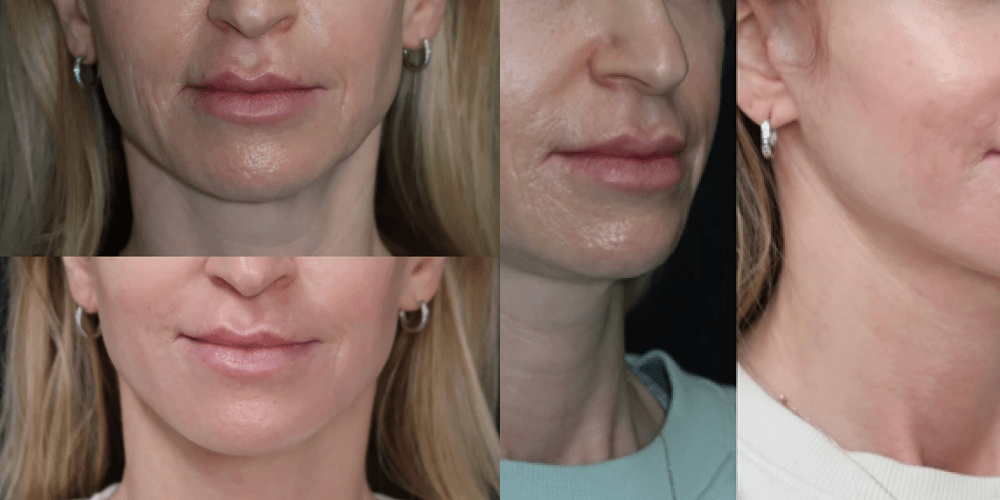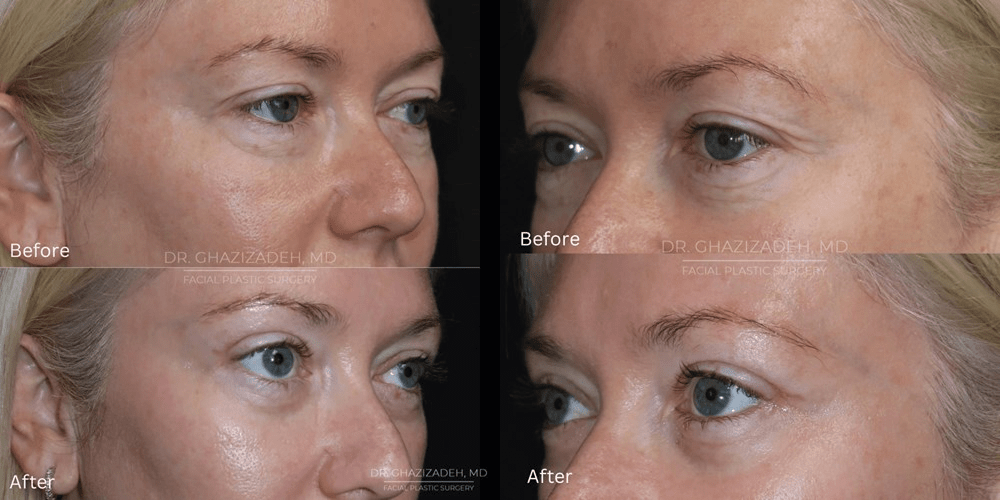Laser Skin Resurfacing in Newport Beach, CA
Crafting Personalized Skin Procedures
Elevate your Aesthetic and Bolster Your Confidence

What Is Laser Skin Resurfacing?
How Do Laser Skin Treatments Work?
Based on your complexion and level of skin damage, Dr. Ghazizadeh may recommend a more or less intensive approach for your laser skin resurfacing treatment. There are three common types of laser peel treatments: Ablatice Laser Treatments, Non-ablative Laser Treatments, Fractional Laser Treatments.
For deeper or more intensive laser resurfacing treatments, you may be given a topical retinoid to use for 2 – 3 weeks to prepare your skin and further improve your results. Medication will be given prior to the procedure to help minimize any sensation so you can relax during your appointment. If your skin only needs mild correction, a topical anesthetic may be applied to numb treated areas of the face. For the whole face or more intense laser procedures, some type of sedation may be necessary. During the procedure, you can relax in our treatment chair while the CO2 laser device passes over your skin, directly targeting the designated surfaces for improvement. You will feel heat from the laser, followed by cold air from the built-in cooling system. The laser energy works to eliminate damaged skin cells while also stimulating new collagen growth.
Lighter resurfacing treatments will typically heal over the course of a few days as your skin peels to reveal a rejuvenated appearance. For those who are undergoing a deeper laser treatment, your recovery period will take 2 – 3 weeks. The treated areas may be protected with dressings, and the swelling, burning, and irritation sensation may be stronger. Pain medication can be prescribed to lessen these side effects. Regardless of which treatment you undergo, you should try to reduce exposing your skin to the sun following your resurfacing session and use sunscreen regularly to maintain your results and protect your complexion. It is also important to avoid interfering with the healing process to prevent scarring and to protect your face from sun exposure. After the peeling is finished, the treated skin should feel softer while also appearing rejuvenated, younger, and clearer.
Commonly Corrected Problems With Laser Skin Resurfacing
- Fine lines and wrinkles
- Sun damage and age spots
- Acne scars
- Uneven skin tone
- Hyperpigmentation
- Enlarged pores
- Rough or textured skin
- Dull complexion
- Skin laxity
- Uneven skin texture
- Melasma
- Scarrin
The Benefits of Laser Skin Resurfacing
Improves Skin Texture
Reduces Pigmentation
Stimulates Collagen Production
Minimizes Scarring
Reveal Softer, Younger-Looking Skin
Why Choose Dr. Ghazizadeh Facial Plastic Surgery?
Is Laser Skin Resurfacing Right for You?
The Laser Skin Treatment Process: What to Expect
Types of Laser Treatments
ABLATIVE LASER TREATMENTS
NON-ABLATIVE LASER TREATMENTS
FRACTIONAL LASER TREATMENTS
IPL (INTENSE PULSED LIGHT) THERAPY
CO2 LASER THERAPY
ND: YAG LASER TREATMENT
Frequently Asked Questions
How long does laser skin resurfacing last?
How often can you do laser skin resurfacing?
Who can perform laser skin resurfacing?
How long does it take to see results from laser skin resurfacing?
Can I get laser skin resurfacing for stretch marks?
Can laser skin resurfacing be done under eyes?
Laser Skin Resurfacing Recovery
After undergoing laser skin resurfacing, it’s essential to follow proper post-treatment care to ensure optimal healing and results. Typically, patients can expect some redness, swelling, and mild discomfort immediately after the procedure, which may persist for a few days to a week, depending on the intensity of the treatment. Dr. Ghazizadeh will provide detailed instructions on how to care for your skin during the recovery period, including the use of gentle skincare products and sunscreen to protect your skin from sun exposure.


